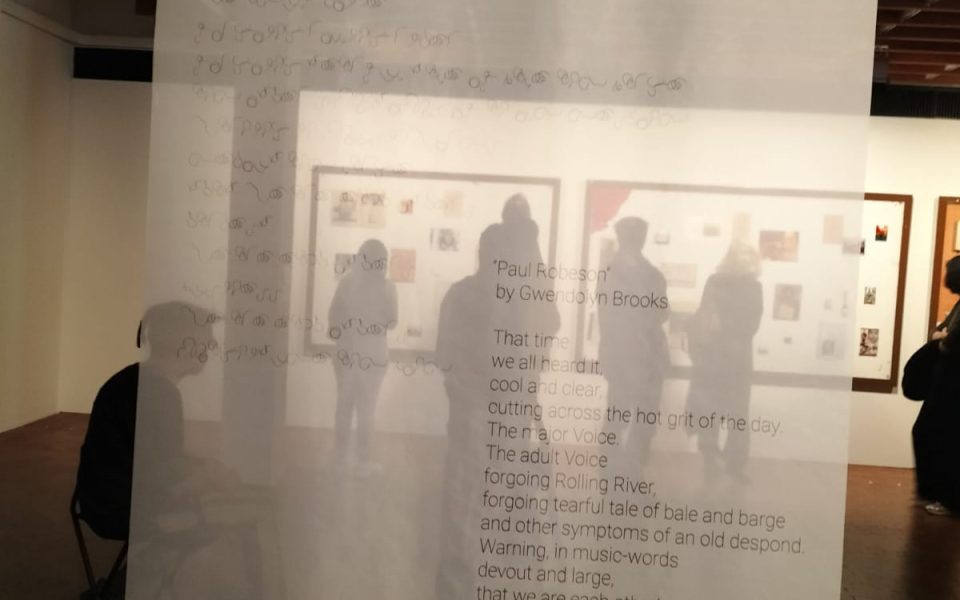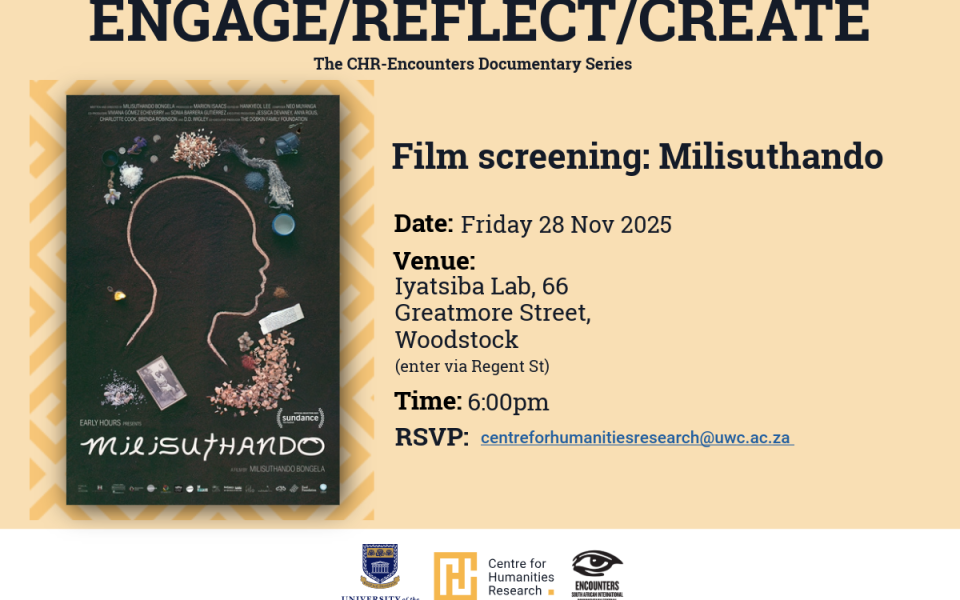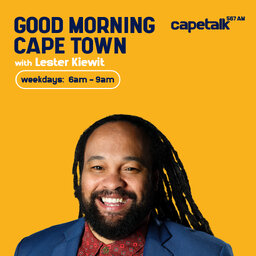Winter School 2021: Fragment and Form

CHR Winter School 2021 on the theme of Fragment and Form was a hybrid event, hosted online and in-person at the Retreat at the Boschendal Estate in Franschhoek.
The following paragraphs are written by, and draw on the experiences and appreciations of, four CHR Fellows. Following the chronological order of the lectures, this article highlights key provocations and lessons from the school. Consistent with Fragment and Form, two of us attended in-person and two online, making these reflections not only anecdotal but symbolic as well.
Ajohche Awungjia, Lindokuhle Mandyoli, Kiasha Naidoo, and Ben Verghese
On Fragment and Form
The CHR 2021 Winter School marked a coming together of colleagues both online and in-person, hosted by the CHR in collaboration with the SARChI Chair in Social Change at the University of Fort Hare and the Interdisciplinary Center for the Study of Global Change (ICGC) at the University of Minnesota.
This year’s Winter School theme represented a continuation and culmination of inquiries undertaken throughout the year in the CHR Fragment and Form reading group. In the concept note, the CHR’s Ross Truscott and Maurits van Bever Donker articulate:
This pair of terms, “fragment and form,” asks to be read . . . as an opposition, much like “fragment and whole” or “content and form.” As an opposition, the “fragment” is what is left over in the formation of something, bits of stone chipped off in the sculpting of a human form, scraps on the workshop floor, a reflection effaced in the final draft it enabled. And yet, as has been experienced in the CHR core reading group in 2021, which has taken “fragment and form” as its guiding thread, the terms do more than oppose each other.
Truscott and van Bever Donker draw on Jacques Derrida’s suggestion that form and fragment “may always entail each other” and go on to suggest that perhaps it is through reading the “margin” that form and fragment can be apprehended:
Rather than hearing this as a hailing from a Winter School committee to a “form,” a class, perhaps it might be heard as a transcription of the “double binds” in which the Humanities, as a field, is caught today, and, in this call, in this entrapment, we might begin to open possible futures for a more human face.
Day ONE
CHR Director Heidi Grunebaum began Winter School by acknowledging the mix of excitement and peculiarity at the possibility of gathering in-person (for those at Boschendal) for the first time since the COVID-19 lockdown. G. Arunima (Centre for Women’s Studies, Jawaharlal Nehru University) then presented “Form of the Fragment: Notes on Democracy from the Margins,” a lecture drawing from a selection of published prison memoirs along with her own solidarity with students to chart state violence in response to protests against the 2019 Citizenship Amendment Bill.
The afternoon sessions brought to the fore the impact the late Qadri Ismail has had on many colleagues in Minnesota, Cape Town, and further afield. Early in his presentation, Maurits van Bever Donker quoted the influential first lines from Ismail’s Culture and Eurocentrism: “The trouble with dead white men is that some of them are not men, many not white and an alarming number not even dead.” This statement is a testament to Ismail’s wit and intellectual contributions on the problem and question of eurocentrism. For his presentation, van Bever Donker further drew on Nahum Dimitri Chander and Achille Mbembe in relation to relativised difference and asked the question of reading in the context of an attempt to deconstitute race.
In tribute to Ismail, Ajay Skaria (University of Minnesota) titled his online lecture “The subaltern and the minor; for Qadri Ismail” and spoke of the invaluable history of engagement they shared. Chairing the session, Ciraj Rassool (History, UWC) reminded the audience of the intellectual partnerships formed over many decades that converged at Winter School. Skaria’s discussion brought together his own thoughts on Ismail’s work and Gandhi on the project of making the minor “a figure for an aspiration for another freedom,” of viewing the minor as an “alternative principle.” What is at stake in his talk is the matter of redressing the wrongs of subalternity without the subaltern or minor becoming a recessive element in the self-preserving mechanism of domination embedded in the notion of majoritarian democracy. How can the concept of political love be leveraged in the emergence and preservation of another freedom in ways that nationalism and radical socialism discourses have not been able to do?
Day TWO
The second day started with a lecture from Marcos Martins (Superior School of Industrial Design, State University of Rio de Janeiro), who spoke about the social media innovation of “the infinite scroll,” drawing our attention to the invisible curatorship of this technology. Martins opened the discussion up to thinking the role of technology in the mediation and historiography of the human. Martins also shared a clip of a multimedia collaboration between himself and sound artist and composer Philip Miller, who was in attendance. These rich lines of inquiry resonated strongly with the CHR’s broader intellectual work and reverberated into the afternoon session.
The afternoon saw a CHR group talk by Aja Marneweck, Jane Taylor, and Luyanda Nogodlwana and Siphokazi Mpofu of Ukwanda Puppets and Designs Art Collective. Together, they reflected on the CHR-based project the Laboratory of Kinetic Objects (LoKO). The speakers explored the singular circumstances of generosity, reciprocity (and sometimes the refusal thereof) that arise in the act of walking giant puppets. Speaking about the ten-year puppetry collaboration in Barrydale with partners Net vir Pret and Handspring, Marneweck proposed to ask what it is about the act of walking the giant puppet that might lend itself to a willingness from the public to engage with the puppet and with each other in contentious spaces? Walking, Marneweck observed, becomes an act of translation and a practice embedded in politics.
In an online lecture, Nancy Luxon (University of Minnesota) then sought to explore the relation of public movements, such as #metoo and Black Lives Matter, between official political power and their articulation of a normativity. She focuses on the “witness” as a place of the interpersonal in a complex political structure and a point through which we may glean something about what is “see-able” and what is “say-able” to what she refers to as “structures of violence.” For Luxon, #metoo momentarily, through enunciation, pauses the violence which arises from “the displacement of power to competing, incommensurable domains of authority.” She argues that it is a movement which participates in both advocacy and prescription, at best minimising the pull of adherence to political norms and structures which restrict speech
Day THREE
The final day started with Fernanda Pinto de Almeida (CHR) presenting a chapter she was invited to write for the book project Black Archives. Exploring the historical accounts of Sol Plaatjie’s itinerant cinema, Almeida considers the social implications that Plaatjie saw in cinemas on the transactional bioscope and its moving images of Tuskegee in relation to the pedagogical deployment of cinema in the country. She concluded that the bioscope became an important and potentially dangerous site for articulating political solidarity by showing aspirations of the future. Ross Truscott (CHR) then presented a paper in which he drew our attention back to “thinking the university,” particularly the historically black university as it seeks to deal with the proliferation of managerialism in higher education.
CHR Founding Director Premesh Lalu gave the final paper, discussing the longstanding questions he posed at the centre’s inception that have guided many of the academic projects undertaken at the CHR, including thinking the university in Africa, freedom in the post-apartheid, and the deconstitution of race. Keeping the dangers of petty apartheid in mind, Lalu considered how Hendrik Verwoerd, rather than being designated an “architect of Apartheid,” can be considered as a lab technician in the practice of experimental psychology. Lalu went on to articulate an understanding of apartheid as the separation of sense and perception.
The final day concluded with farewells from colleagues and friends as Premesh Lalu departs on secondment to the Africa Institute in Sharjah, UAE. A notable farewell came from CHR Administrator Lameez Lalkhen, who has been at the centre with Lalu since its inception. Lalkhen shared her warm memories of their journey together and the great successes they have achieved in building the CHR.
What fragment? What form?
In the end, Winter School left many of us with questions that we will continue to pursue. In the context of a conflicted humanities, such provocations reiterate the value of the engagements emanating from the annual Winter School. Among those question reverberating since the CHR’s beginning, we ask “What constitutes the becoming technical of the human? What are the relations of power in this ‘becoming’?” Lalu’s questions around race, aesthetics, performance, aesthetic education, and global debates on the humanities loom large for the work to be done to explain our present social conundrum(s). Moreover, Winter School asked questions about the making of meaning and society in the post-colonial. Straddling between problem and critique, as per van Bever Donker’s observations, the school engaged an array of questions about the ethics of critical thinking in the context of real human experiences. Ultimately, it asked “What fragment, what form? What is fragmented and what is formed?” Everything is moving constantly, in various directions, between fragment and form.
This post represents the collaborative spirit and collegiality of the CHR. Written by Fellows Ajohche Awungjia, Lindokuhle Mandyoli, Kiasha Naidoo, and Ben Verghese, with editorial support from Iona Gilburt. The technical set-up and filming was organised and executed by CHR Fellow Ali Ridha Khan, with additional photography by Phokeng Setai, Lameez Lalkhen, and Premesh Lalu. Video and photo editing by Iona Gilburt.




